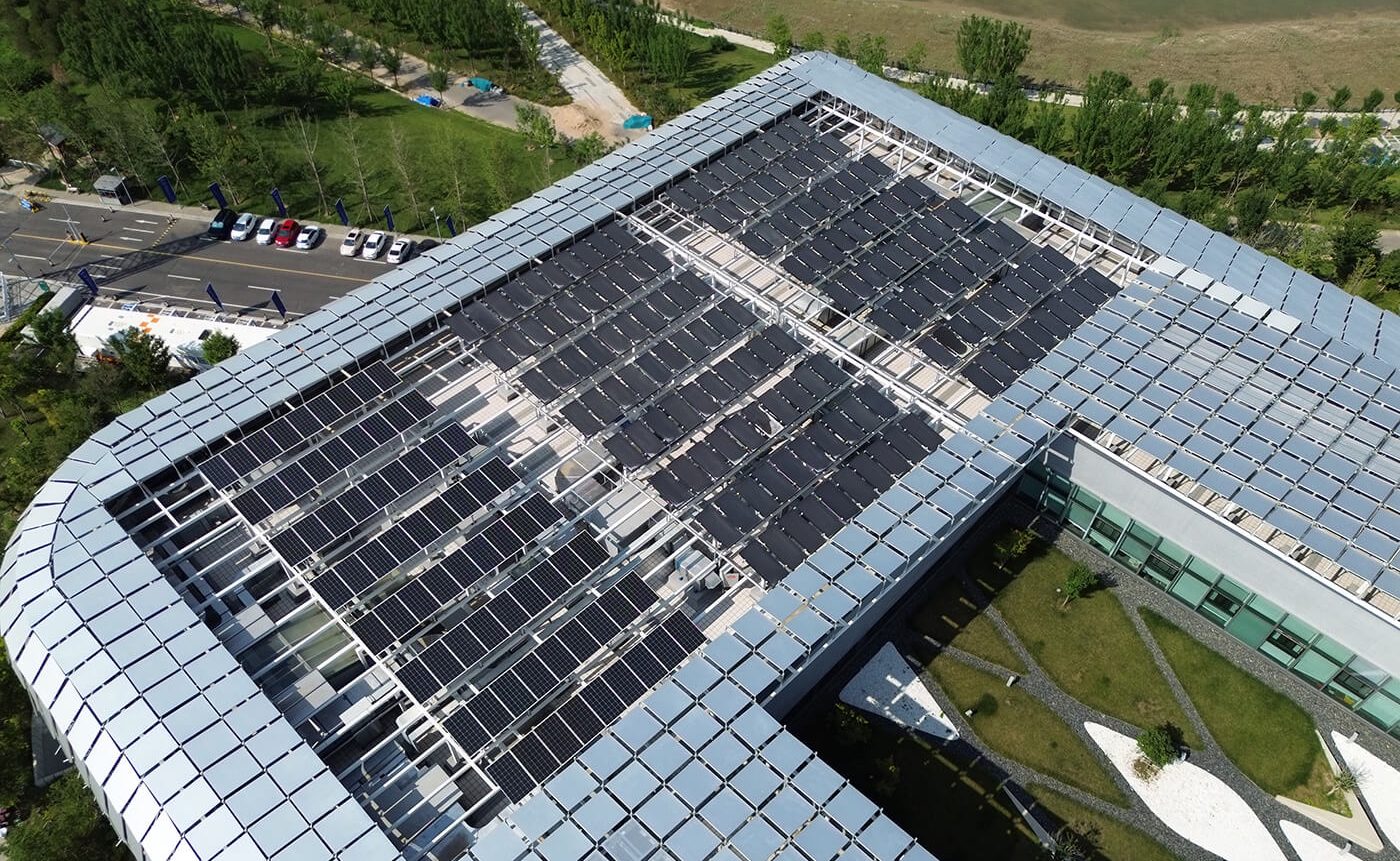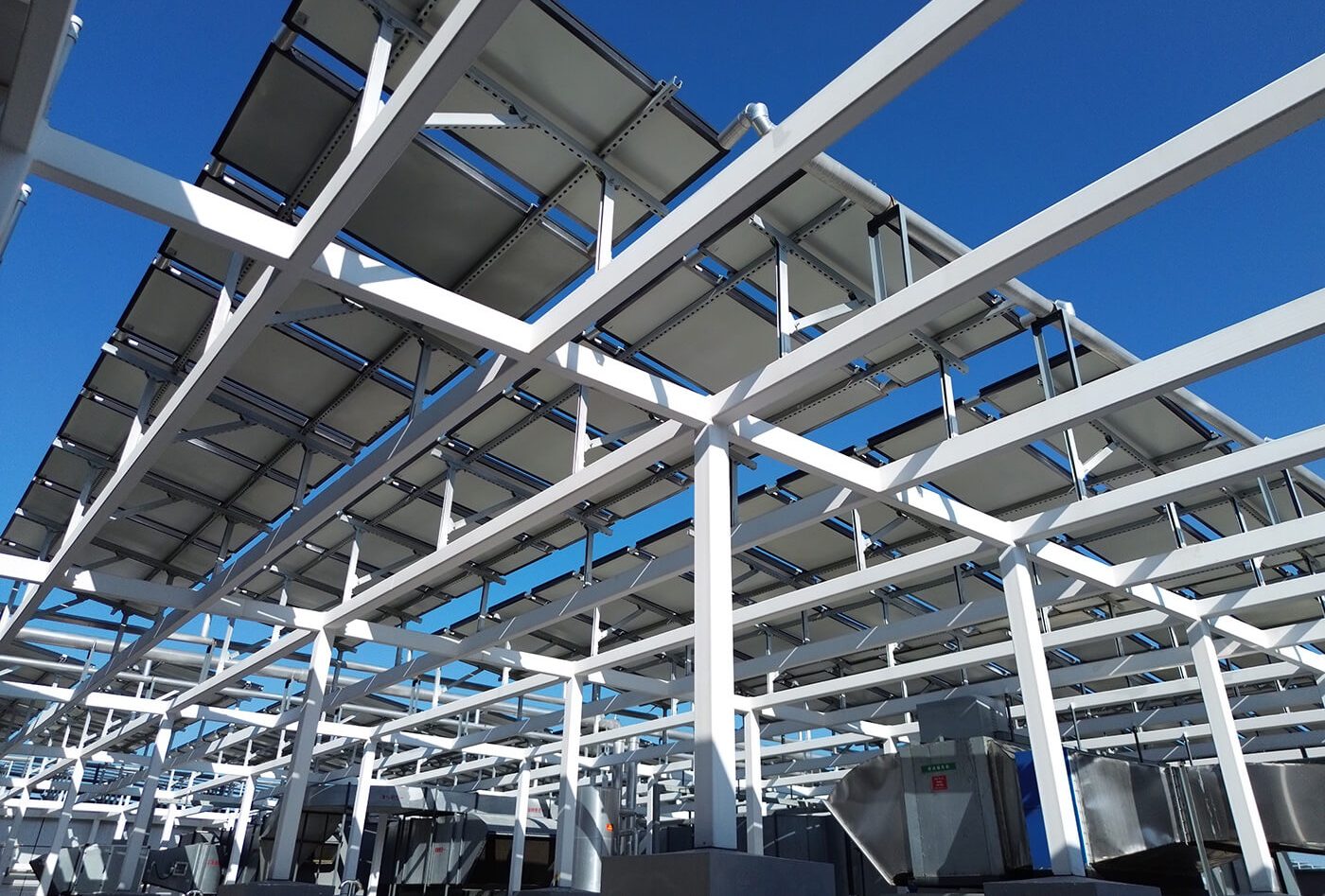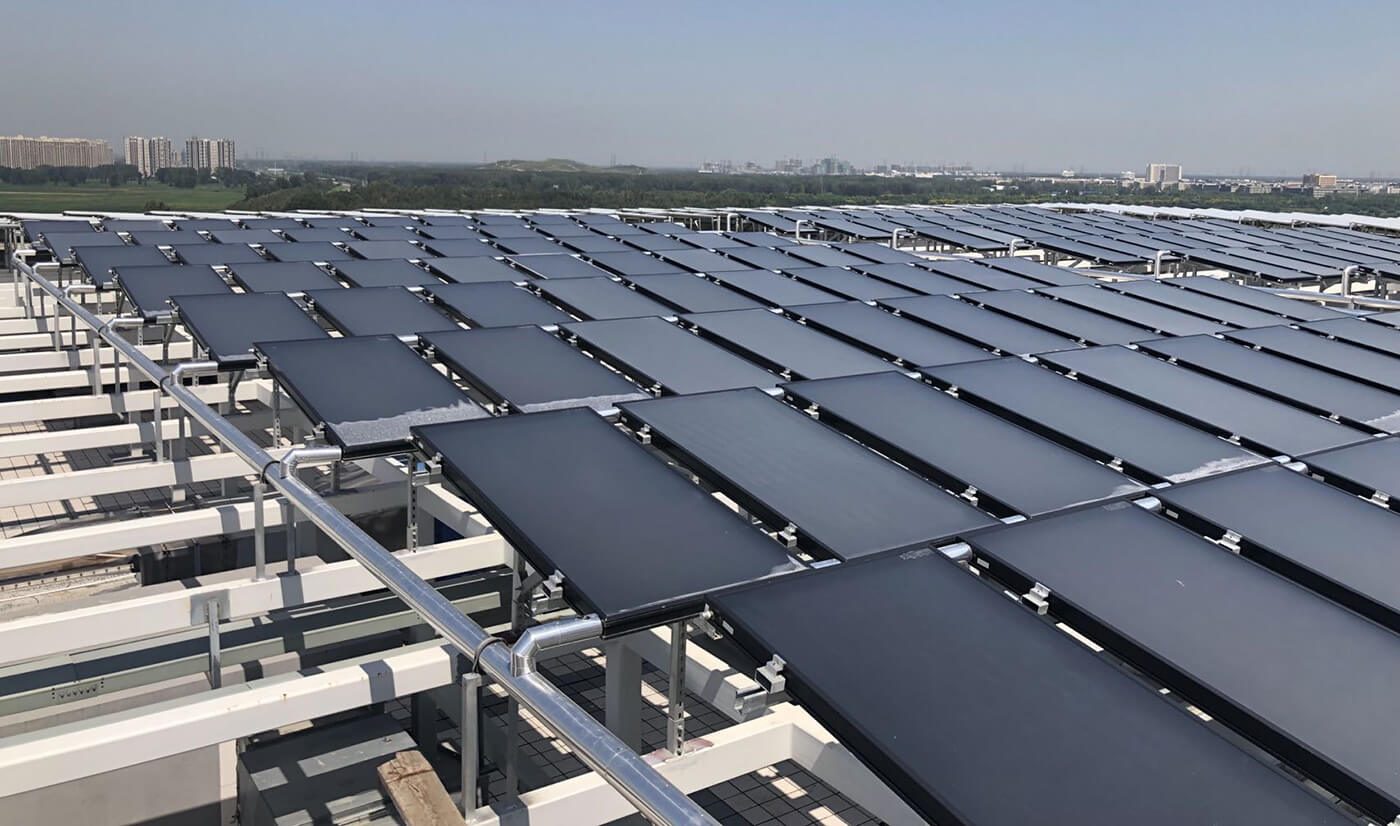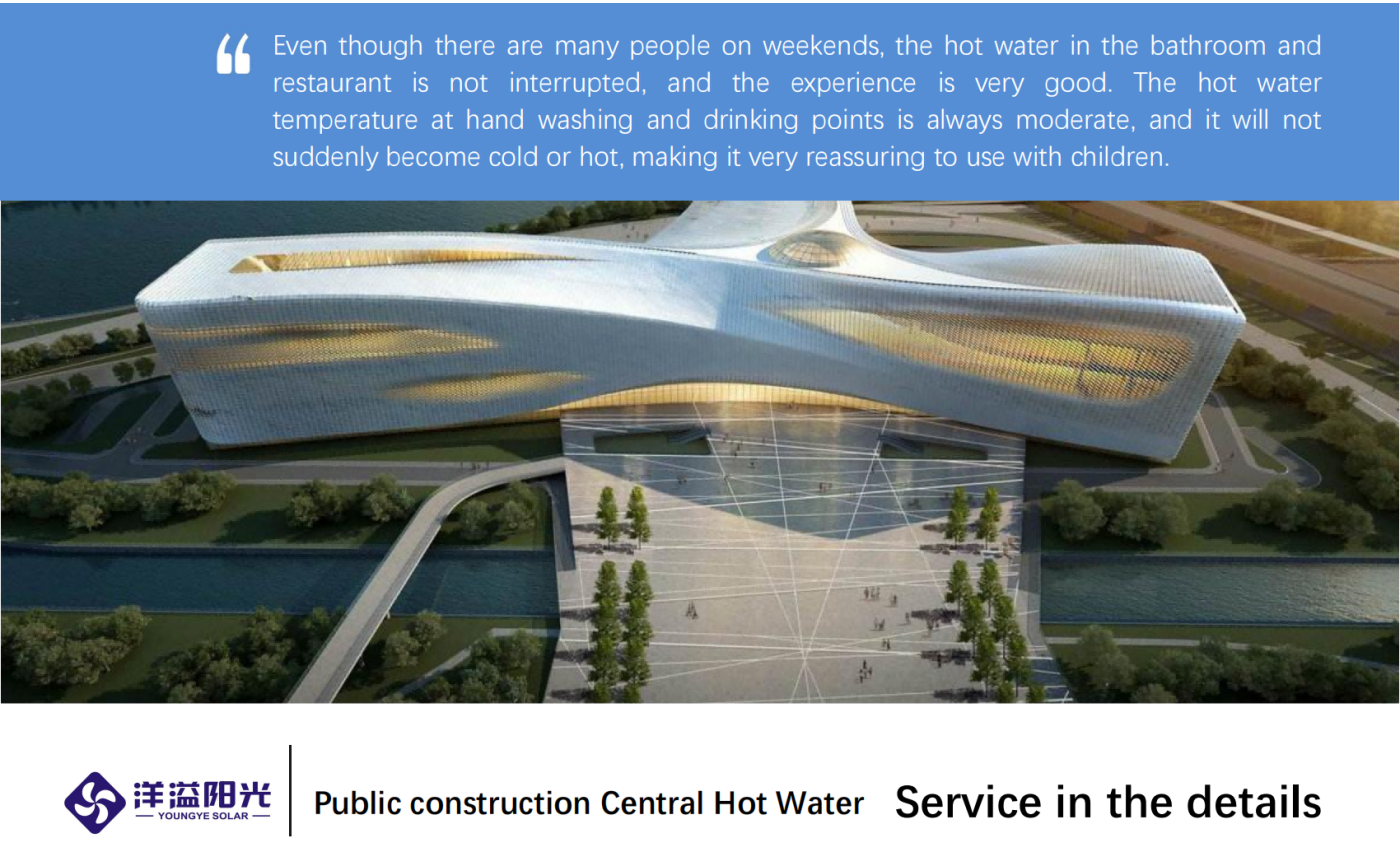The Need:The Henan Science and Technology Museum (New Building) is located in Zhengzhou, Henan Province, China. The project plans to cover an area of approximately 100000 square meters, with a total construction area of approximately 130000 square meters and a total investment of approximately 2.037 billion yuan. It is a major public welfare project highly valued by the Henan Provincial Party Committee and Government, aimed at disseminating science and technology, improving citizens’ scientific literacy, and expanding the practice of science education for young people. It is now necessary to introduce solar hot water systems to contract daily hot water demand.
The Challenge:
★Building structure load-bearing and adaptation: The science and technology museum has a variety of architectural shapes, some of which have unconventional structures such as irregular roofs and glass curtain walls. Moreover, the collector, its bracket, water tank and other equipment have a certain weight, and the load-bearing capacity of the roof needs to be accurately calculated.
★Layout of collectors and lighting efficiency: Due to limited space on the rooftop, it is necessary to plan the layout of collectors reasonably, taking into account both building aesthetics and functionality.
★Maintenance and safety guarantee: Public places have a large flow of people, and later maintenance operations require high-altitude work, which poses significant safety risks, and maintenance operations may affect the visitor experience.
The Solution:
★Configuration: 160 flat plate solar collectors + 2 volumetric heat exchangers + 2 gas water heaters
★The flat panel solar energy+gas boiler hot water system adopts system intelligent control, and the solar energy and boiler automatically complement each other, ensuring stable water temperature. Gas boilers have fast heating speed and can instantly replenish high-temperature hot water to meet peak water or high flow demand.
★Now that the equipment is put into use, using renewable energy as a popular science venue in science museums can enhance public environmental education. The staff of the Science Museum stated that during holidays or group visits, it is necessary to immediately use a large amount of hot water, and the system can also respond quickly. The Science Museum is mainly for children to visit, and the system is equipped with a constant temperature mixing valve or temperature limiting device.
★In addition, adopting modular design reduces the failure rate and minimizes downtime for maintenance in public venues.The energy consumption data of the hot water system can also be integrated into the interactive exhibition of the science museum to popularize energy-saving technologies.


